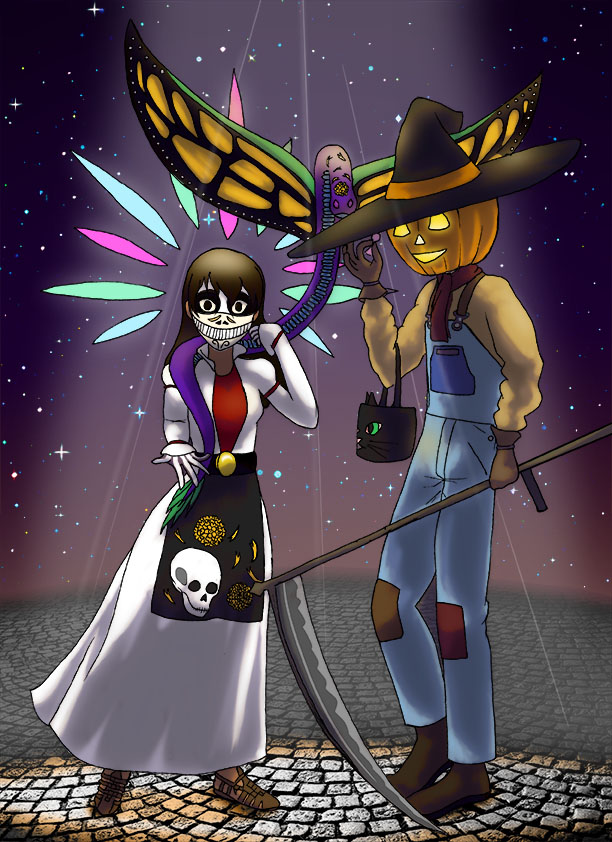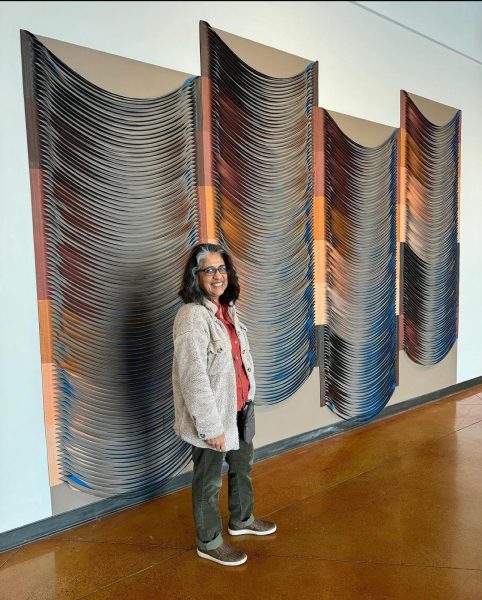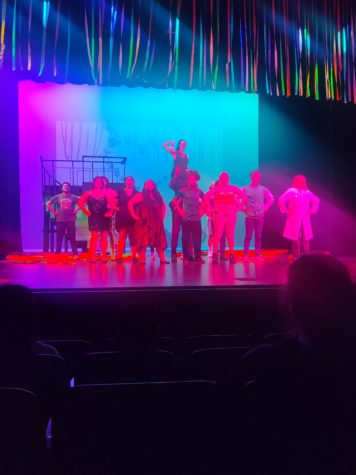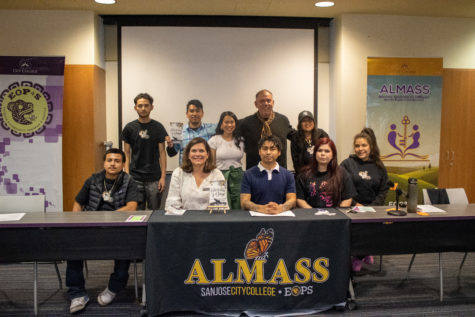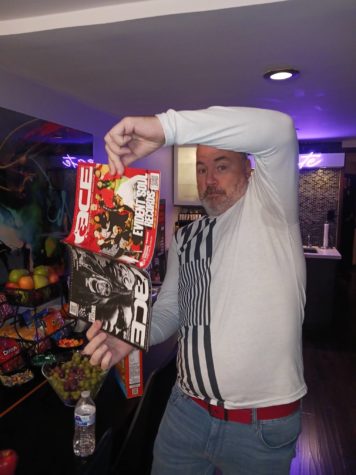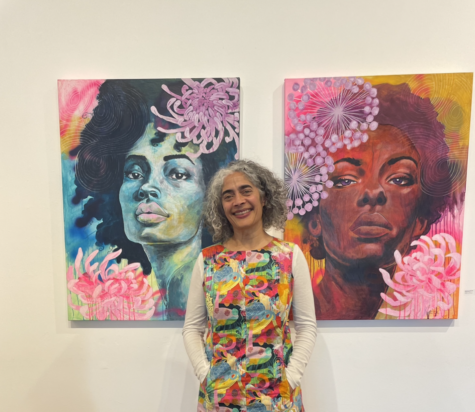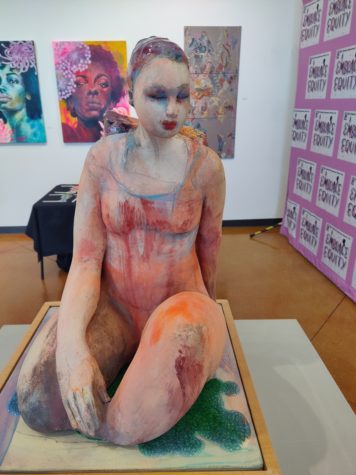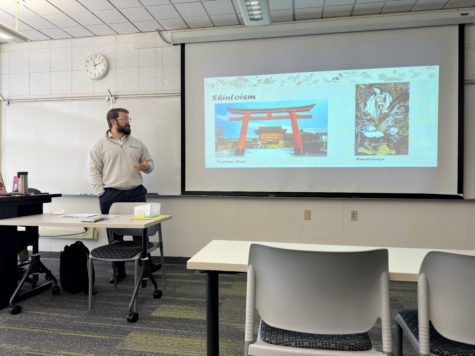Together in death
Two appropriately skull-like themed holidays taking place near the same time
October 22, 2019
Of the autumn holidays, Halloween and the Day of the Dead have many similarities, both involving death, but each in a unique way.
Halloween, which takes place on Oct. 31, starts off the theme of death and spookiness. It wasn’t always like this, however, as it originates from the Celtic holiday of “Samhain” (pronounced “sow-win”). Samhain was a 2-day holiday where it was believed that the barrier between the spiritual and physical worlds would become weak and spirits walked among the living.
During the Samhain, people would celebrate the fruits of their harvest, while also being wary of the spirits. Bonfires and feasts were held and they would dress up in dead animal skins to avoid being kidnapped by the spirits or fairies.
This holiday changed initially through Roman conquest. When the Romans ruled over the Celts, they integrated the celebrations of Feralia and Pomona, two of their gods. Feralia was a holiday to commemorate the passing of the dead, while Pomona, the goddess of fruits and trees was honored on the second day of the holiday. Apples have become an integral part of this holiday since as some people came to believe that apples were connected to the spirit world.
This would later take on another significance in the 19th century, showing its more superstitious origins from fortune-telling. Girls would find their future suitors by marking their apples before they put them into a water barrel, where the men would try to bite an apple with their mouth.
Christianity would also make changes to this holiday by changing its naming and its length, making it a one day event. Thanks to Gregory III, “All Saints Day” was celebrated on Nov. 1 beginning in the 8th century.
Many of Halloween’s customs began to change as well, due to all the changes and its continued spreading throughout the world. For example, the practice of “trick or treat” has evolved from what it was originally intended to be.
It was practiced first among poorer families before it was just mostly children. Then, the practice of children going house to house was more like a Christmas carol, except instead of singing the kids would chant prayers to the families of the deceased. In exchange for these services, the kids would receive little cakes for their troubles, the “treat” in “trick or treat.”
Another iconic tradition is the pumpkin carvings known as the “Jack o’ Lanterns.” The tradition was based on a tale about a drunkard, who was able to escape Satan but not have admittance into Heaven, for he was not a pleasant man. As such, he would wander around aimlessly with a lit turnip lantern.
The pumpkin took its place as an integral part of this holiday as a recent addition made by the Americans. Originally, the carvings would take place on a turnip, beet, or potato. It was in the United States where pumpkins were used due to having an abundance of them, and they proved to be a great replacement given its gourd-like shape. Making scary carvings to scare away the “Jack O’ Lantern” has become tradition since then.
“Dia de Los Muertos” follows Halloween closely, taking place just a day later. Thanks to the recent films of “Book of Life” by Jorge Gutierrez and “Coco” by Lee Unkrich and Adrian Molina, this holiday is beginning to have more traction around the world.
This holiday originated from our southern neighbor, Mexico, and is celebrated by the other Latin American nations. Its origins are from Mesoamerica, which includes Mexico and other Central American nations. This holiday has its roots in Aztec, Mayan, and Toltec beliefs and customs. These three civilizations believed that death was another aspect of life, so there was no need to be afraid of it.
“Dia de Los Muertos” is a two-day event that honors those who have passed on. On the first day, Nov. 1, children and babies that died too soon are honored. On the second day, Nov. 2, the death of the adults are honored. This holiday used to be a month long event, where people would celebrate the life and death cycle with their harvest of corn. It was during this that Mictecacihhuatl, the queen of the underworld, was honored. Back in the day, a real human skull was used to represent her, but that tradition has not carried on.
The major aspects of this holiday are the skulls and the “ofrendas”, or family altars, where those that have departed are welcomed back. Skulls take on a symbolic meaning throughout the holiday, both in the form of candy and face paint. People paint the skulls on their faces, it goes to show how the Aztec people believed in duality of life and death. This duality is thought in the sense that death is a part of life and humans are the bridge between heaven and earth, thus are responsible for maintaining the balance. Many people would play games and tell tales while wearing skull face paint.
The introduction of sugar skulls are where the marking of modern European influences began to take place. After being introduced to sugar and its production, there was such an abundance of it that even though many were too poor to buy actual religious items, people began making their own skulls out of sugar. The sugar skulls were then used to represent those who had departed.
The color orange is a very significant color during this event, not only for the marigolds used during the event, but also for the monarch butterflies. Marigolds, or cempasuchil, are used frequently to decorate the house and graves of the families of the departed. Monarch butterflies represent the soul of those returning to the living. This belief originating from the migration habits of these butterflies, since they always migrate back during the winter, which caused people to believe that they represented the departed.
Other Spanish influences on this holiday can be seen through some of the items that are placed on the altars. These items include religious items, like crosses, and foods like bread. The “pan de muerto” is a type of sweet bread that is small and round, with bone-like candy inside.
The oferendas are the most important part of the holiday that welcomes back departed family members. Many items can be found on them, such as family pictures, personal items, favorite foods, and decorations.
Both of these holidays deal with the spirits of the dead, albeit in opposing ways. Halloween tries to scare the spirits off, while Day of the Dead welcomes them back.

